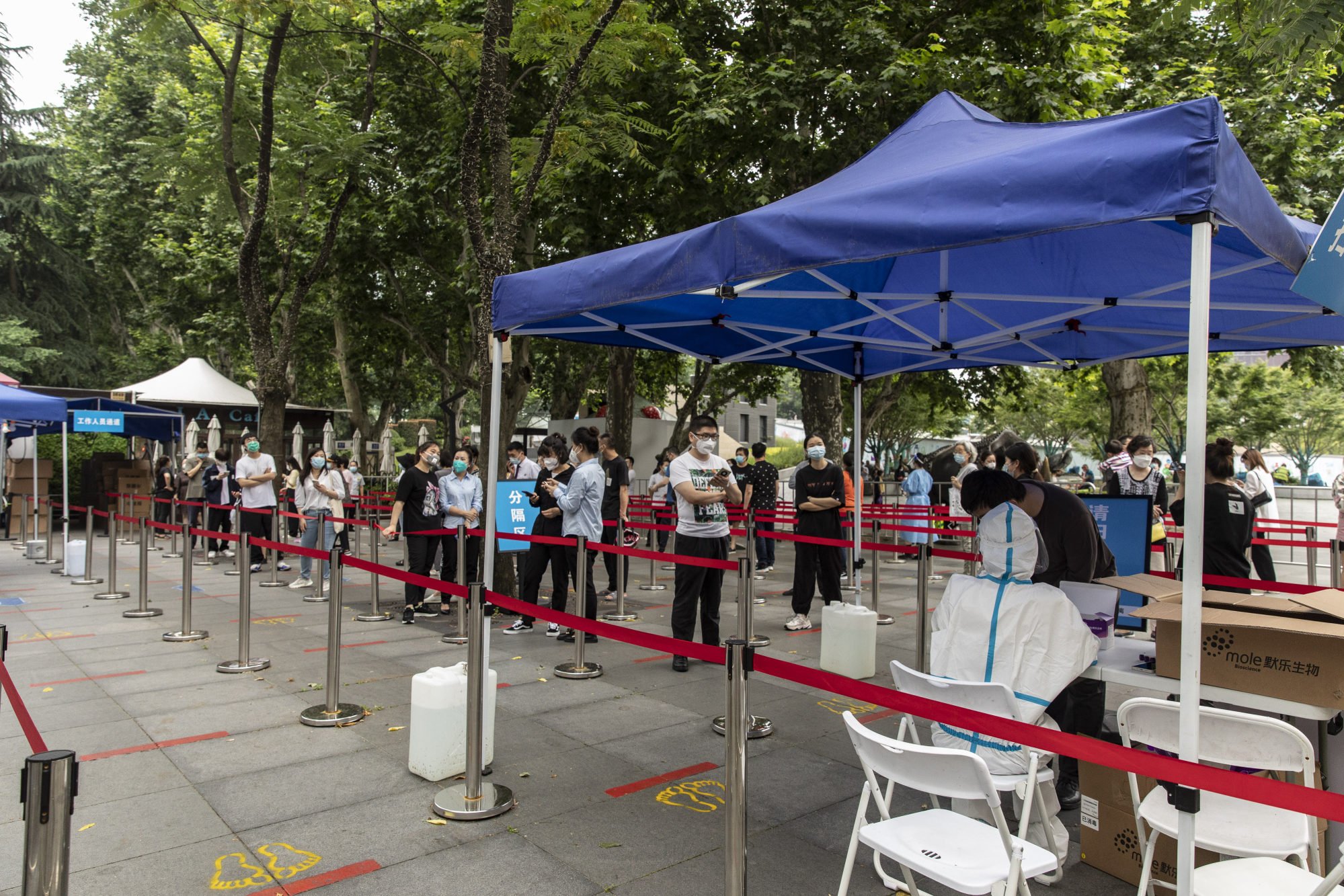
Coronavirus: Shanghai’s community infections return a day after formal lockdown exit, sending some areas back into quarantine
- Seven community infections of Covid-19 found, with three of the cases showing symptoms
- Shanghai’s health commissioner urges residents to observe social distancing, wear masks and avoid crowding to prevent a resurgence of the disease
Shanghai’s health authorities found seven community infections of Covid-19 for the first time in three days after formally ending the city’s lockdown, in a setback that underscores the challenges in completely blocking out the Omicron variant in one of the most congested cities on Earth.
Three of the seven cases in the Pudong and Jing’an districts showed symptoms, health authorities said at a press briefing. Earlier in the day, authorities announced that daily new cases had fallen 13.3 per cent to 13 cases in the previous 24 hours, while five cases showed symptoms of the disease.
All 26 close contacts of the infected patients had been put under quarantine, where 21 had tested negative for Omicron, officials said.
Two residential compounds in Pudong and two in the Caojiadu subdistrict of Jing’an were classified as “medium-risk” areas, requiring residents to be confined to their homes for 14 days, said Shanghai’s health commissioner Wu Jinglei.

“Shanghai has entered a new phase with the focus on restoring life and businesses, but we still face risks of resurgent cases,” Wu said. “We must adhere unswervingly to the zero-Covid policy in trying to eliminate the virus.”
Shanghai’s government ended the city’s lockdowns on June 1, freeing 90 per cent of the city’s 25 million residents who live in “low-risk zones” – areas that had been infection-free for 14 days – to move around freely.
With the end of the citywide lockdown, crowds of people gathered in the absence of social distancing rules. Commuters, shoppers and revellers returned in droves, crowding shopping centres, public transport and night spots.
Wary of possible resurgence, Wu urged Shanghai’s residents to observe social distancing, wear masks and avoid crowding, particularly during the Duanwu festival on June 3, a public holiday in China.
June 1 was the beginning of what the Shanghai authorities called a “gradual” and “phased” process to return life and work in China’s commercial hub to normality, aimed at the end of the month.
School is still out for most students, as teaching switched to online classes and virtual classrooms. Grade 11 and 12 students will be allowed to return to their campuses on June 6, while grade nine is scheduled to return on June 13. Still, students who are due to sit for their high school entrance examinations in July will be barred from riding on public transport to commute between their homes and school.
Many of the city’s large manufacturers such as Tesla’s Gigafactory 3 at the Lingang free-trade zone in Pudong are still operating in “closed loops”, where employees are required to sleep in their factories to ensure zero contact with outsiders.
“The local government is wary of any resurgence of new cases, so the ‘closed loop’ system can at least help reduce the risks of a sporadic spread of the virus in the key manufacturing bases,” said Gao Shen, an independent analyst in Shanghai. “Life and businesses cannot be fully restored to the pre-lockdown levels for the next two or three weeks.”
Residents are required to provide negative results from nucleic acid tests taken within 72 hours before using public transport and visiting public venues, including office buildings, parks and shopping centres.
But people in Minhang said they had to queue up for as long as two hours before their throat swab samples could be collected on Wednesday.
The Shanghai government has deployed 15,000 sample collection points across the city, but local health authorities said that some of the stations were not fully prepared amid a lack of manpower and medical supplies, lengthening the wait for the residents.
Xia Kejia, head of the city’s Covid-19 screening work, apologised for the delay in sample collection and pledged to deploy more workers and extend the kiosks’ timings to resolve the issue.



_1.jpg?itok=FxuA75op)